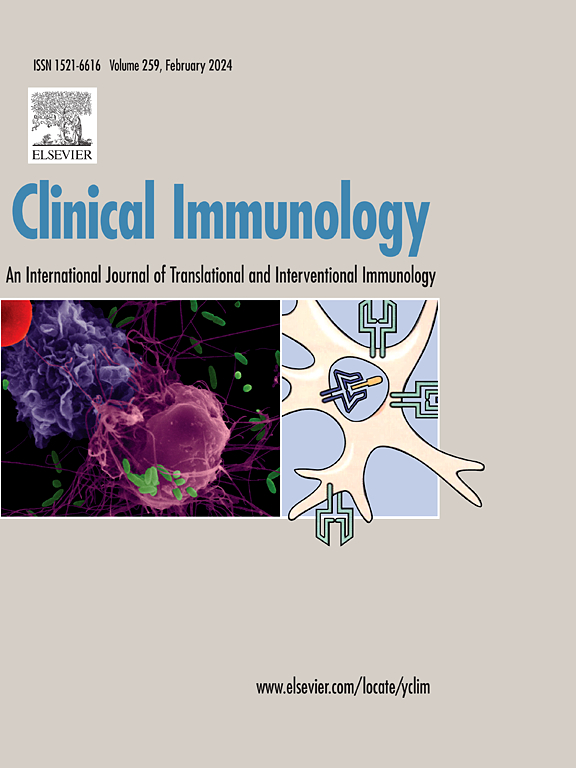Exploring TH17-mediated inflammation in epidermolytic ichthyosis: Clinical and mechanistic insight
IF 3.8
3区 医学
Q2 IMMUNOLOGY
引用次数: 0
Abstract
Epidermolytic ichthyosis (EI) is a genetic skin disorder caused by mutations in the KRT1 and KRT10 genes, leading to severe skin abnormalities and inflammation. Current treatment options are limited, emphasizing the need for pathogenesis-based therapies. This study investigates the role of T helper type 17 (TH17) inflammatory responses in EI and explores the mechanisms underlying these responses. We found that patients from the family carrying both KRT1 and MPO mutations exhibited varying degrees of psoriasis-like manifestations and significant therapeutic responses to anti-IL-17 A treatment. The treatment efficacy was also confirmed in patients with KRT10 mutations. Mechanistically, Single-nucleus RNA sequencing revealed significantly elevated levels of TH-17 related cytokines in epidermis and CCR6+ TH17 cell infiltration in the dermis. Additionally, we observed aberrant activation of the IκBα–JNK–c-Jun signaling pathway, leading to heightened IL-8 expression and exacerbated inflammation. Our findings underscore the critical role of TH17-mediated inflammation in the pathogenesis of EI and suggest potential therapeutic avenues targeting this pathway to improve patient outcomes.
探索表皮松解性鱼鳞病中th17介导的炎症:临床和机制的见解
表皮松解性鱼鳞病(EI)是一种由KRT1和KRT10基因突变引起的遗传性皮肤病,可导致严重的皮肤异常和炎症。目前的治疗选择是有限的,强调需要基于发病机制的治疗。本研究探讨了辅助性T - 17 (TH17)炎症反应在EI中的作用,并探讨了这些反应的机制。我们发现同时携带KRT1和MPO突变的家族患者表现出不同程度的牛皮癣样表现,并且对抗il -17 A治疗有显著的治疗反应。KRT10突变患者的治疗效果也得到了证实。机制上,单核RNA测序显示表皮TH-17相关细胞因子水平显著升高,真皮CCR6+ TH17细胞浸润水平显著升高。此外,我们观察到IκBα-JNK-c-Jun信号通路异常激活,导致IL-8表达升高,炎症加剧。我们的研究结果强调了th17介导的炎症在EI发病机制中的关键作用,并提出了针对这一途径改善患者预后的潜在治疗途径。
本文章由计算机程序翻译,如有差异,请以英文原文为准。
求助全文
约1分钟内获得全文
求助全文
来源期刊

Clinical immunology
医学-免疫学
CiteScore
12.30
自引率
1.20%
发文量
212
审稿时长
34 days
期刊介绍:
Clinical Immunology publishes original research delving into the molecular and cellular foundations of immunological diseases. Additionally, the journal includes reviews covering timely subjects in basic immunology, along with case reports and letters to the editor.
 求助内容:
求助内容: 应助结果提醒方式:
应助结果提醒方式:


